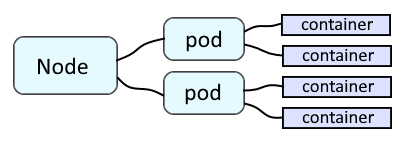
If you are not familiar with the oc command, refer to OpenShift - Getting Started with the oc command.
A node contains one or more pods, and each pod contains one or more containers.

Before issuing the oc delete pod command, issue the oc login command and then issue the oc get deployments command to view the applications that have been deployed to the pod.
oc get deployments -n project001
Something like this should be returned.
NAME DESIRED CURRENT UP-TO-DATE AVAILABLE AGE
app001 1 1 1 1 205d
Then issue the oc get deployments command with the -o yaml option to get the applications replicas.
oc get deployments -n project001 -o yaml
Something like this should be returned. In this scenario, if the pod is deleted, 1 new pod will be created, since replicas is 1. If you want to delete the pod, the deployment replicas will need to be set to 0.
replicas: 1
oc get pods command can be used to display the pods.
oc get pods -n project001
Something like this should be returned.
NAME READY STATUS RESTARTS AGE
foo-9mzm2 1/1 Running 0 8d
foo-vmzmz 1/1 Running 0 8d
bar-pflxc 1/1 Running 0 8d
Use the oc delete pod command to delete a pod. In this example, foo-vmzmz will be deleted.
oc delete pod foo-vmzmz
Something like this should be displayed.
pod "foo-vmzmz" deleted
If for whatever reason the pod does not delete, you can try the --force flag. This must often be used when a pod is stuck in a Terminating state.
oc delete pod foo-vmzmz --force
You may also want to set --grace-period to zero.
oc delete pod foo-vmzmz --force --grace-period=0
Something like this should be returned.
warning: Immediate deletion does not wait for confirmation that the running resource has been terminated. The resource may continue to run on the cluster indefinitely.
pod "foo-vmzmz" force deleted
Did you find this article helpful?
If so, consider buying me a coffee over at 